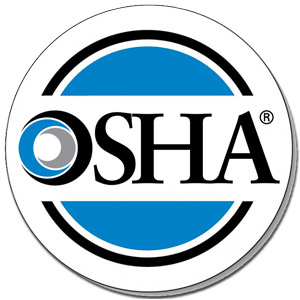Proposed OSHA record-keeping obligations could be costly
The Federal Occupational Safety and Health Administration (OSHA) is proposing an amendment clarifying its record-keeping rules that could provide the agency greater ability to cite and fine an employer. OSHA already requires employers to create and maintain records about workplace injuries and illnesses that meet certain criteria. Specifically, employers must: Create and update a log…

The Federal Occupational Safety and Health Administration (OSHA) is proposing an amendment clarifying its record-keeping rules that could provide the agency greater ability to cite and fine an employer.
OSHA already requires employers to create and maintain records about workplace injuries and illnesses that meet certain criteria. Specifically, employers must:
- Create and update a log of work-related injuries and illnesses (OSHA 300 Form);
- Create and maintain injury and illness incident reports (OSHA 301 Form); and
- Create and display an annual summary of workplace incidents (OSHA 300A Form) between Feb. 1 and April 30 of each year.
Employers must keep these records for at least five years. The five-year retention period begins on Jan. 1 of the year following the year covered by the records. For example, the five-year retention period for incident reports created on Jan. 23, June 15, and Nov. 4 of this year begins on Jan. 1, 2016.
OSHA can issue a citation and assess a corresponding fine on employers who don’t comply, but not more than six months after a violation.
A potentially costly interpretation
Under the amendment, however, OSHA interprets a violation as existing until corrected. Therefore, the six-month period to issue citations and assess penalties begins on the date of the last instance of the violation. For example, if a violation that started on Feb. 1 was corrected on May 15, the six-month period would begin on May 15 and OSHA would have until Nov. 15 to issue a citation.
OSHA also asserts that uncorrected violations are considered ongoing violations, and that each day of noncompliance is subject to a separate penalty.
Bottom line
This amendment makes it possible for OSHA to penalize employers for a record-keeping violation within six months of the last date of noncompliance, not the first date when a violation occurs. This exposes an employer to greater possibility of fines and emphasizes the employer’s responsibility to create and maintain records.
The amendment also justifies OSHA’s ability to assess penalties against a violating employer for each day of noncompliance, until the maximum penalty amount is reached or the employer corrects the violation.
 The comment period for this proposed rule is open to the public until Sept. 28, 2015. Individuals who would like to submit an opinion may do so via mail, fax, or electronically.
The comment period for this proposed rule is open to the public until Sept. 28, 2015. Individuals who would like to submit an opinion may do so via mail, fax, or electronically.
Contact Sinclair Risk & Financial Management if you have questions about this proposed amendment or OSHA record-keeping and reporting requirements.
This article was written by Marty Shea, MTAC’s insurance program manager and vice president of Sales at Sinclair Risk & Financial Management. If your organization needs assistance with job descriptions, HR compliance documents or want to review your risk management program, you can contact Marty at (203) 284-3208.
